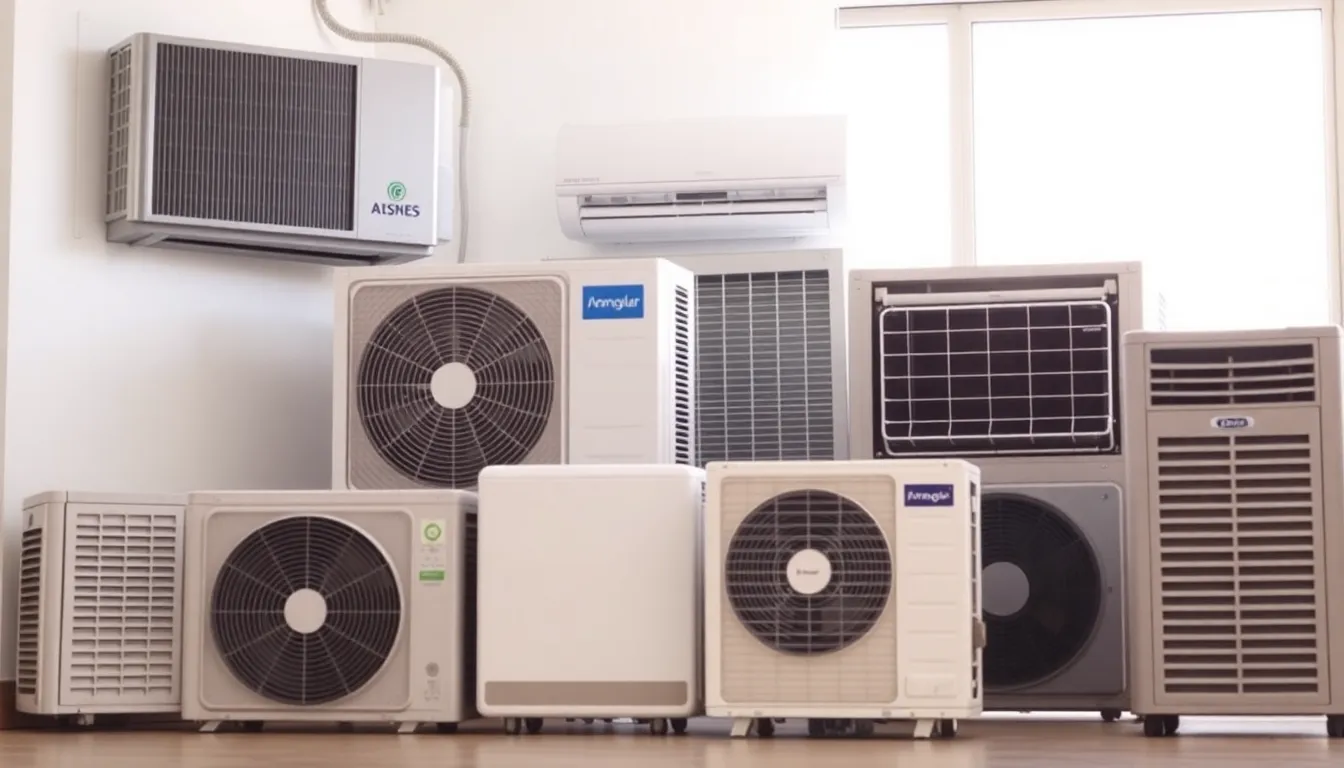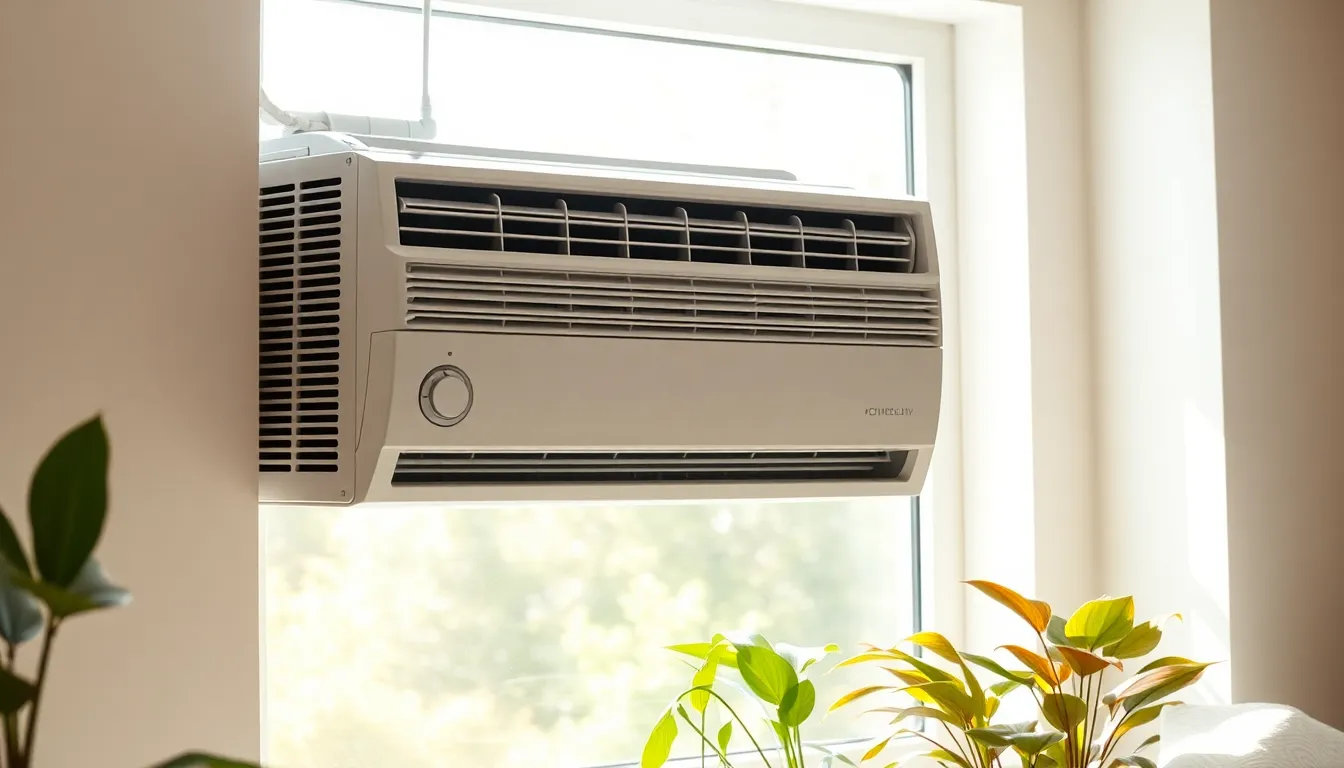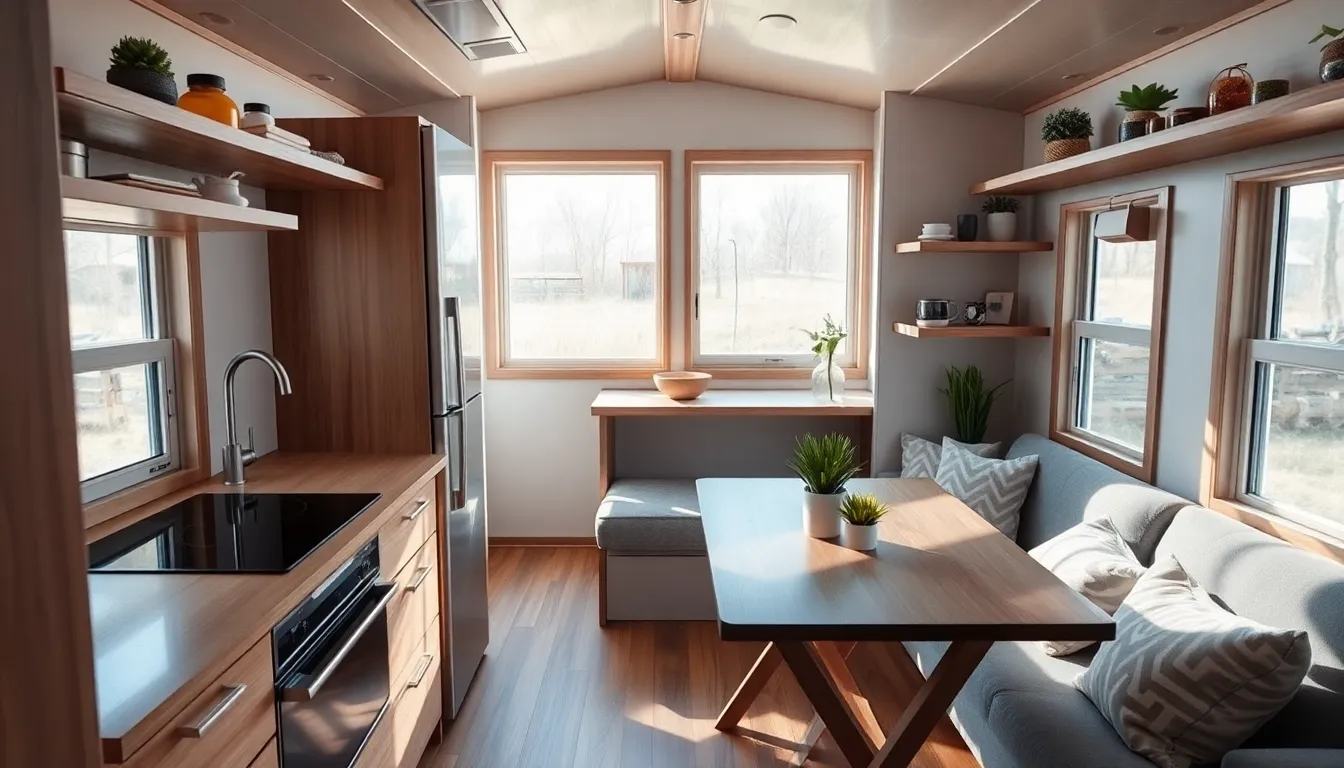When the summer sun turns your living room into a sauna, air conditioning units become the unsung heroes of comfort. They swoop in like caped crusaders, transforming sweltering heat into a refreshing breeze. But not all units are created equal, and choosing the right one can feel like trying to find a needle in a haystack—while sweating profusely.
Table of Contents
ToggleOverview of Air Conditioning Units
Air conditioning units play a crucial role in maintaining indoor comfort. These systems come in various types, including central air conditioning, window units, and portable models. Each type serves specific needs based on building size, layout, and personal preferences.
Central air conditioning systems operate through ducts, distributing cool air throughout multiple rooms. Effective for larger homes, these systems require professional installation and regular maintenance. In contrast, window units offer a more accessible solution. Ideal for smaller spaces, they fit directly into window frames, providing localized cooling.
Portable air conditioners offer flexibility, allowing users to move them between rooms. Typically, these units require a venting kit to expel hot air, making installation straightforward. Ductless mini-split systems emerge as another option, combining indoor and outdoor components without ducts. These systems work efficiently and provide both cooling and heating options, enhancing versatility.
Energy efficiency remains an essential consideration when selecting an air conditioning unit. Consumers should look for units with high Seasonal Energy Efficiency Ratio (SEER) ratings. Higher ratings indicate better efficiency, leading to lower energy costs. Additionally, smart technology integration in some air conditioning units allows for remote control and scheduling, improving convenience.
Maintenance is vital for optimal performance, regardless of the unit type. Regular cleaning of filters and ducts prevents reduced efficiency and costly repairs. Monitoring refrigerant levels ensures the system operates effectively, enhancing its lifespan.
Investing in the right air conditioning unit ensures comfort and efficiency, adapting to diverse needs and preferences.
Types of Air Conditioning Units

Air conditioning units come in various types, each designed to meet specific needs and preferences. Understanding these types helps consumers make informed choices based on the size of their space and cooling requirements.
Central Air Conditioning Systems
Central air conditioning systems excel in cooling larger homes efficiently. These systems distribute cool air through ductwork connected to various rooms, ensuring consistent temperatures throughout the space. Installation requires professional expertise due to complexity. High SEER ratings indicate energy efficiency, leading to lower utility costs. Regular upkeep, such as changing filters and servicing components, ensures optimal operation and longevity of the system.
Ductless Mini-Split Systems
Ductless mini-split systems provide versatile cooling solutions for homes lacking ductwork. Each system comprises an outdoor compressor and indoor air-handling units mounted on walls or ceilings. These units allow for zoning, enabling individuals to cool specific areas without affecting others. Higher SEER ratings in many models signify energy efficiency, which translates to cost savings. Installation remains simpler than central systems and often requires minimal modifications to existing structures.
Window Air Conditioning Units
Window air conditioning units serve as accessible cooling solutions for smaller spaces. These units fit directly into existing window frames, allowing for easy installation. Their compact design makes them ideal for apartments, dorm rooms, and offices. Various models offer different cooling capacities, so consumers can select units based on room size. Energy efficiency ratings play a significant role, with higher SEER ratings ensuring reduced energy bills.
Portable Air Conditioning Units
Portable air conditioning units offer flexibility and convenience for users. These models move easily from room to room, allowing for targeted cooling wherever needed. Exhaust hoses typically vent hot air through a window or door, requiring minimal installation. Performance varies by unit, so selecting the appropriate BTU rating is essential based on room dimensions. Energy efficiency remains crucial, ensuring that users enjoy comfort without high electricity costs.
Key Features to Consider
Selecting the right air conditioning unit requires understanding several key features. Focus on energy efficiency, noise levels, and cooling capacity as primary considerations.
Energy Efficiency Ratings
Energy efficiency ratings reveal how well an air conditioning unit performs. Consumers often look for higher Seasonal Energy Efficiency Ratio (SEER) ratings, which indicate better energy savings. A unit with a SEER rating of 14 or higher operates more efficiently, reducing electricity bills significantly. Units with lower ratings can lead to increased costs over time. Government and manufacturer websites provide SEER ratings, ensuring buyers make informed decisions. Additionally, choosing ENERGY STAR certified units guarantees superior efficiency and environmental benefits.
Noise Levels
Noise levels play a major role in the comfort level of an air conditioning unit. Many units produce varying sound levels, affecting user experience. Central air conditioning systems typically operate quietly, distributing cool air through ducts without noticeable noise. Conversely, window and portable units can be louder due to their compact design. Many brands offer quiet models, and an ideal noise level is usually below 60 decibels. Evaluating sound ratings before purchase helps ensure a peaceful environment.
Cooling Capacity
Cooling capacity is crucial for achieving optimal indoor comfort. Measured in British Thermal Units (BTUs), this capacity indicates how much heat a unit can remove from a room. Smaller spaces, such as bedrooms, often require units with 5,000 to 8,000 BTUs for effective cooling. Larger areas may need units with 12,000 BTUs or more. Properly sizing the unit to the space prevents overworking and reduces energy consumption. Manufacturer recommendations typically provide guidance on the appropriate cooling capacity needed for specific room sizes.
Installation and Maintenance
Proper installation and regular maintenance of air conditioning units significantly enhance efficiency and lifespan. Understanding the installation options and maintenance procedures helps users achieve optimal performance.
Professional Installation vs. DIY
Choosing between professional installation and DIY depends on unit type and user expertise. Professionals ensure proper sizing, placement, and connections, which can prevent future issues. Complex systems, like central air conditioning, particularly require expert handling due to intricate ductwork. DIY may work for window or portable units, where simplicity is key. However, improper installation can lead to energy waste or system failure. Weighing the benefits of both options leads to better informed choices.
Regular Maintenance Tips
Routine maintenance keeps air conditioning units operating effectively. Cleaning or replacing filters every one to three months prevents airflow restrictions and enhances efficiency. Scheduling annual inspections allows technicians to check refrigerant levels and test system functionality. Sealing ducts and checking for leaks also improves overall efficiency. Users should monitor the condensate drain to prevent clogs. Keeping the outdoor unit clear of debris ensures unrestricted airflow and smooth operation. Following these maintenance tips maximizes cooling power and prolongs unit life.
Cost and Budget Considerations
Purchasing an air conditioning unit involves several financial factors. Initial costs include the price of the unit itself, which varies by type and capacity. Central air conditioning systems typically range from $3,000 to $7,000, while window units may cost between $150 and $800. Portable models often fall within the $200 to $600 range, making them accessible for various budgets.
Installation expenses contribute significantly to overall costs. Professional installation for central systems usually adds $1,000 to $2,500, depending on the complexity of the setup. In contrast, window and portable units often require minimal installation, which may involve simple setup or self-installation, reducing additional costs.
Energy efficiency plays a crucial role in long-term savings. Units with higher SEER ratings, particularly above 14, tend to save more on energy bills over time. Consumers typically experience savings of 20% to 50% on energy use compared to lower-rated models. Selecting an energy-efficient unit protects against rising electricity prices and promotes better environmental practices.
Maintenance expenses should also be considered. Regular upkeep, such as filter replacements and annual inspections, costs around $100 to $300 annually. Committing to this maintenance prevents costly repairs and extends the unit’s lifespan.
Budgeting for air conditioning should encompass all these factors. Understanding both upfront costs and ongoing expenses enhances decision-making. Assessing individual needs helps in selecting the most suitable system, ensuring comfort without financial strain.
Selecting the right air conditioning unit involves understanding individual needs and preferences. Whether opting for a central system or a window unit each option has its unique advantages. Prioritizing energy efficiency and proper installation can lead to significant long-term savings and enhanced comfort.
Regular maintenance is essential to keep any unit running smoothly. By following best practices for upkeep and being mindful of costs consumers can enjoy a cool and comfortable environment throughout the hot summer months. Investing time in research and maintenance pays off with a reliable air conditioning unit that meets expectations and provides lasting comfort.



